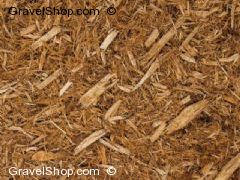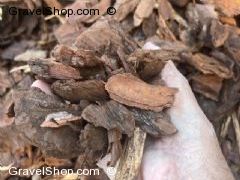$ 0.00
Prices
Mulch, Bark & Bedding
Mulch, Bark, and Bedding
Mulch, bark, and bedding are essential elements of gardening that contribute to both aesthetics and plant health. Understanding their types, uses, and benefits can significantly enhance your gardening experience.
What Are Mulches?
Mulch refers to materials placed over the soil surface to improve its condition and support plant growth. There are two primary categories of mulch: organic and inorganic.Organic Mulch consists of natural materials such as shredded leaves, wood chips, straw, grass clippings, and compost. These materials decompose over time, enriching the soil with nutrients and improving its structure. Common examples include bark mulch, pine needles, and straw.
Inorganic Mulch includes materials like gravel, rocks, rubber, and landscape fabric. While these do not add nutrients to the soil, they are excellent for long-term weed suppression and moisture retention.
Benefits of Mulching
Mulches serve multiple functions in the garden that not only offer aesthetic appeal, but also functional benefits.- Mulch helps retain soil moisture by reducing evaporation, ensuring that plants have consistent access to water.
- By blocking sunlight, mulch prevents weed seeds from germinating, reducing competition for nutrients and water.
- Mulch acts as an insulating layer, keeping soil cooler in summer and warmer in winter, which can protect plant roots.
- A well-mulched garden looks tidy and attractive, adding texture and color to the landscape.
- As organic mulch decomposes, it adds nutrients to the soil, enhancing its fertility and promoting a healthy ecosystem for beneficial organisms like earthworms and microbes.
- Mulch helps protect the soil surface from rain impact and wind, reducing erosion.
- Reduces the chance of plants getting fungal or bacterial infection.
Types of Organic Mulch
There are a variety of mulches available depending on your garden or landscaping projects. Some mulches may be better suited for aesthetic appeal, while others are best for biodiversity.Mulch:This type is made from shredded tree bark and is ideal for flower beds, trees, and shrubs. Bark mulches can last longer than other organic options, providing a protective layer while slowly enriching the soil as they break down.
Some of our most popular mulches are our black mulch, brown mulch, red mulch, cedar mulch, and pine bark.
Pine Needles: Known as pine straw, these needles are light, airy, and do not compact easily. They provide good weed suppression and moisture retention, making them an excellent choice for acidic soil-loving plants.
Cypress Chips: The benefits of cypress chips are extensive as they can prevent weeds from growing in your garden beds, retain moisture ensuring plants have consistent access to water, and are a natural deterrent to termites and other insects.
Straw or Hay: Straw helps reduce the evaporation of water from the soil keeping plants evenly moist. It can also keep fruits and vegetables cleaner when resting on the ground. Hay is commonly used for livestock, but can be used as an alternative for straw.
When to apply mulch
Mulches are best to apply mid-to late spring as annual weeds have not sprouted and herbaceous plants are still dormant. Applying mulch around new plants or established beds helps keep landscaping tightly while also helping the plants environment by retaining moisture, monitoring erosion, etc. There are some expectations to the rules, as new plants can benefit from mulching at any time of the year as it will help with weed suppression and retain moisture allowing them to grow and take root in the soil.How to apply mulch
Before you mulch, bark, or bedding your garden beds or borders ensure you do not smother growing plants and keep mulch at least 5 inches away from woody plants or tree trunks as this can increase the chance of rot or termites. To be effective in your mulching follow these guidelines;- Remove any weeds from the area
- Lay mulch over moist soil ensuring the ground is not frozen
- Mulch needs to be at least 5 cm (2 in) to 7.5 cm (3 in) thick
- As mulch decomposes over time it will feed plants and microorganisms reducing the need to add nutrients
Keep in mind that single trees or shrubs should be mulched to the radius of their canopies to avoid any rot or termites. Avoid mulching around Mediterranean plants as mulch can retain too much moisture, then it is best to use a decorative stone or a gravel rock.
Disadvantages of Mulching
Mulch needs to be reapplied every 1-2 years meaning it's not only a fiscal investment, but also requires upkeep which may not be appealing to all homeowners. If mulch is over 4 inches thick it can become a habitat for small animals and rodents to burrow. More concerning, mulching can cause substantial damage to your plants as if mulch is too thick or left in a pile. Mulch is an organic material that decomposes overtime, and decomposing material produces heat especially under the sun and in large amounts. Mulch can overheat in the summer causing plants to die and also leading to fires, and in some cases spontaneous combustion. Ensure you mulch properly, and keep your mulch moist during the hot summer month, and rack it regular to release any gas. If you see your mulch smoking or on fire, call the fire department and keep your distance.Why order from gravelshop
Gravelshop helps find 'mulch near me', 'bark near me', 'bedding near me', 'Where to buy mulch for landscaping', and 'bulk mulch near me' that are affordable, hassle-free, and delivered quickly. Your project is our priority.
Don't know how much you should buy for your project? Visit our Mulch, Bark, and Bedding Calculator.
Reliable Quality, Delivered Affordably - Your Project, Our Priority.
© Copyright 2025. Powered by Sand Group USA inc.
Type your Zipcode
Type the zip code of the delivery address to see available products and prices.

 Tipload
Tipload Bulkbag Lifted
Bulkbag Lifted Bulkbag Pallet
Bulkbag Pallet Package
Package

















